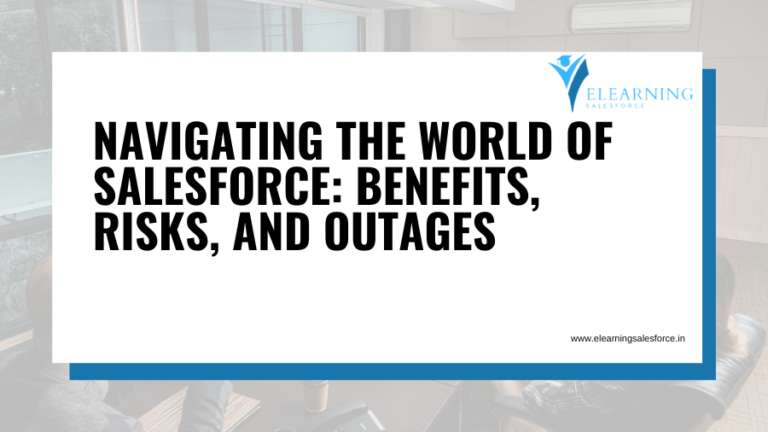Introduction: Salesforce Backup and Recovery
Salesforce Backup and Recovery: In the dynamic realm of Salesforce, where data is a cornerstone of success, ensuring the safety and availability of your information is paramount. Salesforce Backup and Recovery is not just a best practice; it’s a crucial strategy to safeguard against data loss, ensure business continuity, and maintain the trust of your stakeholders. In this blog, we’ll explore the importance of Salesforce backup and recovery, the tools available, and best practices to secure your Salesforce data.
The Importance of Salesforce Backup:
- Data is King:
- In the world of Salesforce, data is the lifeblood of your business. Customer information, transaction records, and critical business insights reside within your Salesforce instance. Losing this data could be detrimental to your operations.
- Protecting Against User Errors:
- Even with the best intentions, user errors can happen. Accidental deletions, changes to critical records, or mass updates gone wrong can lead to data loss. A robust backup strategy is your safety net.
- Guarding Against Malicious Activity:
- As cyber threats evolve, the risk of data breaches and malicious activities increases. A comprehensive backup solution helps mitigate the impact of security incidents by enabling quick data recovery.
Salesforce Backup and Recovery Tools:
- Data Export and Data Loader:
- Salesforce provides native tools like Data Export and Data Loader that allow you to export data in various formats. While these are valuable for manual backups, they might not be sufficient for large-scale or automated processes.
- Third-Party Backup Solutions:
- Several third-party solutions offer advanced backup and recovery features tailored for Salesforce. These tools often provide automated, scheduled backups, point-in-time recovery, and additional security features.
Best Practices for Salesforce Backup and Recovery:
- Regular Automated Backups:
- Implement a regular and automated backup schedule to ensure that your data is consistently backed up. This reduces the risk of data loss between backup intervals.
- Include Metadata:
- Don’t forget about metadata. In addition to data, ensure that your backup strategy includes metadata components such as custom objects, workflows, and validation rules.
- Testing and Validation:
- Periodically test your backup and recovery processes to ensure their effectiveness. This practice helps identify any gaps in your strategy and ensures that you can confidently restore data when needed.
- Encryption and Security Measures:
- Prioritize security in your backup strategy. Encrypt sensitive data during transit and storage. Implement access controls to restrict who can initiate backups and perform recoveries.
- Document Your Strategy:
- Maintain clear documentation of your backup and recovery strategy. Include details about the frequency of backups, the types of data included, and the steps involved in the recovery process. This documentation is invaluable during times of crisis.
Recovering Data in Salesforce:
- Point-in-Time Recovery:
- Many backup solutions offer point-in-time recovery, allowing you to roll back your Salesforce instance to a specific moment in time. This is particularly useful for recovering from data corruption or mass updates.
- Data Comparison and Merge:
- Some tools provide data comparison features that enable you to identify differences between backup and current data. This helps selectively merge or restore specific records.
- Collaboration and Communication:
- In the event of data loss or a recovery scenario, effective communication with stakeholders is crucial. Keep your team informed about the recovery process, expected downtime, and steps they may need to take.
Conclusion:
Salesforce Backup and Recovery are not just technical necessities; they are strategic imperatives for any organization leveraging the Salesforce platform. Whether safeguarding against accidental deletions, data corruption, or security incidents, a robust backup strategy ensures that your Salesforce journey remains resilient, secure, and ready for whatever challenges come your way. As you navigate the digital landscape, remember that the true value of Salesforce lies not just in the data you collect, but in your ability to protect and leverage that data to drive business success.



